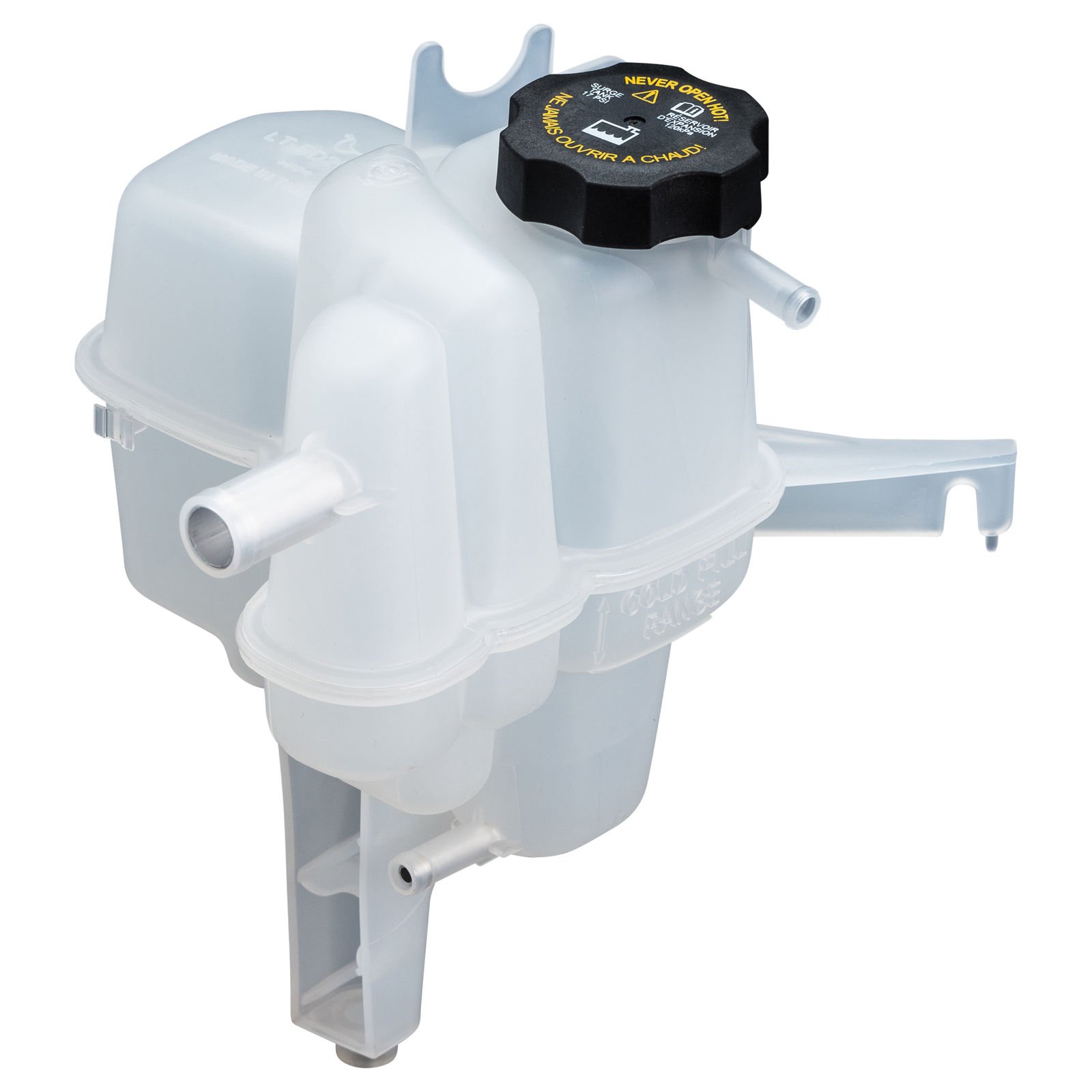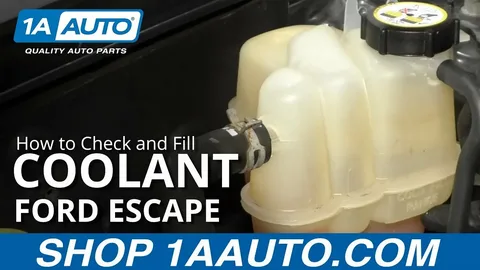Attention all Ford Fiesta owners! Have you ever noticed a small plastic bottle located near the radiator of your car? That, my friends, is the Ford Fiesta Overflow Bottle. While it may seem like a minor component in your vehicle, it actually serves a crucial purpose. In this blog post, we will dive into all the details about the Ford Overflow Bottle, including what it does, why it’s important, and how to maintain it.
Understanding the Function of the Ford Mondeo Coolant Tank
The Ford Mondeo coolant tank is a vital component of your car’s cooling system. Its primary function is to store and circulate coolant throughout the engine, helping to regulate the temperature and prevent overheating.
Coolant, also known as antifreeze, is a liquid that absorbs heat from the engine and dissipates it through the radiator. The coolant tank serves as a reservoir, holding the coolant when the engine is cold and releasing it as needed when the engine heats up. This continuous cycle ensures that the engine stays at an optimal operating temperature, preventing damage from overheating.
In addition to storing coolant, the Ford coolant tank also provides a place for excess coolant to expand into. As the engine heats up, the coolant expands and can overflow. The overflow bottle catches this excess coolant, preventing it from leaking onto the ground or causing damage to other parts of the car.
Regular maintenance of the coolant tank is essential to ensure its proper functioning. This includes checking the coolant levels, inspecting the tank for cracks or leaks, and flushing the system periodically to remove any debris or contaminants.
 Common Problems Associated with the Ford Fiesta Coolant Tank
Common Problems Associated with the Ford Fiesta Coolant Tank
One of the common problems associated with the Ford Fiesta Coolant Tank is coolant leaks. Over time, the coolant tank can develop cracks or become damaged, leading to coolant leakage. This can result in a loss of coolant, which can cause overheating and potential engine damage if not addressed promptly.
Another issue that may arise with the coolant tank is sediment buildup. Over time, debris and contaminants can accumulate in the coolant system, including the tank. This can hinder proper coolant circulation and cooling efficiency, potentially leading to overheating.
Additionally, the pressure cap on the coolant tank can become faulty. A faulty pressure cap can cause coolant leaks or pressure imbalances in the cooling system, leading to overheating or other issues.
It is important to address these common problems associated with the Ford Coolant Tank as soon as possible. Regular maintenance and inspection of the coolant tank can help detect any leaks, cracks, or sediment buildup. If any issues are found, it is recommended to consult a professional mechanic for proper repairs or replacement of the coolant tank.
Steps to Maintain Your Ford Escape Overflow Bottle
To ensure the proper functioning of your Ford Escape Overflow Bottle and prevent any issues with your car’s cooling system, it’s crucial to follow these steps for regular maintenance:
- Check Coolant Levels: Regularly monitor the coolant levels in your Ford Overflow Bottle. Ensure that the coolant is at the recommended level and top it up if necessary. Low coolant levels can lead to overheating and engine damage.
- Inspect for Leaks: Check the overflow bottle for any signs of leaks or cracks. Inspect the connections and hoses leading to the bottle as well. If you notice any leaks, it’s essential to address them promptly to prevent coolant loss and potential damage.
- Flush the Coolant System: Over time, debris and contaminants can accumulate in the cooling system, affecting its efficiency. Periodically flush the coolant system to remove any sediment or dirt. This will help maintain proper coolant circulation and prevent overheating.
- Replace the Pressure Cap: The pressure cap on the overflow bottle plays a vital role in maintaining the correct pressure levels in the cooling system. If you notice any signs of wear or damage on the cap, replace it to ensure proper sealing and prevent coolant leaks.
How to Replace a Faulty Ford Escape Coolant Tank?
If you’ve determined that your Ford Escape coolant tank is faulty and needs to be replaced, don’t worry! While it may seem like a daunting task, with a little bit of knowledge and the right tools, you can tackle this project on your own.
Before you begin, make sure you have a new coolant tank that is compatible with your Ford Escape model. You can find this information in your owner’s manual or by consulting a professional. Once you have the replacement tank, follow these steps to replace the faulty coolant tank:
- Park your car in a safe and level area. Make sure the engine has cooled down completely before starting.
- Open the hood and locate the coolant tank. It is usually located near the front of the engine compartment, connected to the radiator with hoses.
- Use a wrench or socket set to remove any bolts or clamps holding the coolant tank in place. Carefully disconnect any hoses attached to the tank.
- Remove the old coolant tank from its mounting position and set it aside.
- Install the new coolant tank in the same location, making sure it is secure and properly aligned.
- Reconnect any hoses and tighten any bolts or clamps to ensure a tight seal.
- Fill the new coolant tank with the recommended type and amount of coolant. Be sure to consult your owner’s manual for the correct specifications.
- Start the engine and allow it to run for a few minutes. Check for any leaks or signs of improper installation.
Choosing the Right Replacement for your Ford Overflow Bottle
When it comes to choosing the right replacement for your Ford Overflow Bottle, there are a few factors to consider. First, you’ll want to make sure that the replacement is compatible with your specific Ford model. Check your owner’s manual or consult a professional to ensure you’re getting the correct part.
Next, consider the quality of the replacement. Opt for a high-quality overflow bottle that is made from durable materials. This will ensure longevity and prevent future issues with cracking or leaking.
You may also want to consider purchasing a replacement that comes with a warranty. This can provide peace of mind and protect you from any manufacturing defects or faulty parts.
Lastly, consider the price of the replacement. While it’s important to find a quality replacement, it’s also essential to stay within your budget. Shop around and compare prices from different retailers or online sellers to find the best deal.
By considering these factors, you can confidently choose the right replacement for your Ford Overflow Bottle and ensure the proper functioning of your car’s cooling system. Remember, if you’re unsure or need assistance, it’s always best to consult a professional mechanic.
Expert Tips for Preventing Overflow Bottle Issues
To prevent any issues with your Ford Overflow Bottle, here are some expert tips to keep in mind. First and foremost, regular maintenance is key. Be sure to check your coolant levels frequently and top them up as needed. Low coolant levels can lead to overheating and potential engine damage, so staying on top of this is crucial. Additionally, inspect the overflow bottle for any signs of leaks or cracks.
If you notice any, it’s important to address them promptly to prevent coolant loss. Flushing the coolant system periodically is also recommended to remove any sediment or debris that may have accumulated over time. This will help maintain proper coolant circulation and prevent overheating. Lastly, make sure to replace the pressure cap on the overflow bottle if you notice any signs of wear or damage.
The pressure cap plays a vital role in maintaining the correct pressure levels in the cooling system, so a faulty cap can lead to coolant leaks or pressure imbalances. By following these expert tips, you can ensure the longevity and efficient performance of your Ford Overflow Bottle, keeping your car’s cooling system in optimal condition.
FAQS
1. How often should I check the coolant levels in my Ford Overflow Bottle?
It is recommended to check your coolant levels at least once a month. This will help ensure that your coolant levels are within the recommended range and prevent any potential issues with overheating. If you notice a significant decrease in coolant levels or if you are experiencing any coolant leaks, it’s important to have your car inspected by a professional mechanic.
2. How do I know if my Ford Overflow Bottle is leaking?
One way to determine if your overflow bottle is leaking is by checking for any coolant pooling underneath your car or a decrease in coolant levels. If you notice these signs, it’s essential to inspect the overflow bottle for any cracks or leaks. You can also check the connections and hoses leading to the bottle for any signs of leaks or damage.
3. Can I replace the Ford Overflow Bottle myself?
While it is possible to replace the Ford Overflow Bottle yourself, it is recommended to consult a professional mechanic if you’re unsure or uncomfortable with performing this task. They have the necessary tools and expertise to ensure a proper installation and prevent any potential issues.
Conclusion
In this blog post, we have explored the importance of the Ford Overflow Bottle in maintaining your car’s performance. We have discussed its function as a crucial component of the cooling system, storing and circulating coolant to regulate engine temperature and prevent overheating. We have also highlighted common problems associated with the overflow bottle, such as coolant leaks, sediment buildup, and faulty pressure caps.



